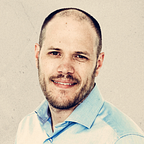Heroes
Most companies have one. Large companies have a bunch of them.
The heroes. The ones that save the day. The ones we always go to when something important needs solving. We don’t even think about it. They’re always there to save us, until they’re not. One morning on the subway, it all comes crashing down. Our hero hits an invicible wall. From one instant to the next, he suddenly knows for a fact he won’t make it through one more day at work without puking his guts out.
Being a hero seems like a good thing, right? Even the hero thinks so. It’s fun to be the go to person. The one with all the answers. It’s also exhausting. Everyone involves you in everything. Invites you to all the meetings. Puts your name in the cc field of every single mail ever sent in the entire building. Asks “Hey, could I ask you a thing real quick?” ninteen times per day.
Heroes are the ones who get shit done. Until they get nothing done. And nothing gets done without them. Heroes are one of the reasons why large companies are so slow. You’d think conservative corporations have redundancies and contingency plans for everything right? That for any given function they have a whole team? I’ll let you in on a secret.
In any given company, there’s a whole list of mission critical stuff that only one person, I’ll repeat, one person in the whole company knows how to do. The rest have no clue whatsoever how to log on to that production server. Or how the backup works, or what is supposed to be in that regulatory report that we must submit before February 1st. They don’t even know that there is a regulatory report, or what happens if we don’t submit it by February 1st.
In any given company, there’s a whole list of mission critical stuff that only one person in the whole company knows how to do.
This doesn’t happen intentionally, but it happens for a reason. You see, for more than one person to know how to do something, more than one person has to do it. And that doesn’t sound very effective, now does it? We don’t have time for that. Working in pairs, or even worse, sit there and look at someone else doing something? That’s nuts. Or is it?
The buzz word we’re looking for is T-shaped people. We want people who can do more than one thing. Not do it perfect, but do it okay. If you have one person who can do some type of task, he is doomed to become a bottleneck. No one can help him, and if a similar task comes along, it’ll be queued. More likely than not, lots of other people depend on him to do their tasks, so now they’re slowed down too. Suddenly we’re not that effective. Suddenly we’re stuck watching after all.
As we saw with Brent in the Phoenix project, the solution is to have our bottleneck do less stuff. A bottleneck is a less flattering, but more accurate name for our heroes. For all non-critical stuff, others should do it while he acts as a guide and mentor. Even for critical problems, we should allow others to assist or sit in and learn. Because depending on one person is unacceptable. It’s risky, and it’s not even fast.
Depending on one person is unacceptable. It’s risky, and it’s not even fast.
You may think you don’t have this problem in your company. But if you locate the bottlenecks in your processes, I promise the heroes will come falling out of the woodwork.
Good hunting!
